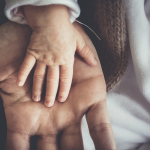We've been told for decades that less is more when it comes to salt in the diet. Recent research has thrown that conclusion into doubt. Can we identify children who may be at risk for SIDS before it suddenly and tragically strikes?
SIDS
A recent study has helpfully advanced our understanding of sudden infant death syndrome (SIDS). Some journalists exaggerated the paper's results in their rush to publish stories. Fortunately, other reporters helpfully and publicly corrected the errors. This is how the media should always operate.
Aside from suffocation and strangulation which are responsible for 25 percent of all sleep-related deaths, other causes of SIDS remain somewhat of a mystery to scientists and parents. But in recent years, much research has explored neurological variants, like serotonin levels in the brain, and a gene variant that could provide some insight.
Our colleague had nine months to read everything there is to know about having a baby. But she missed a couple things, and she's learning about them now.
Putting babies to sleep on their backs is an important safety measure that can decrease the risk of SIDS, or Sudden Infant Death Syndrome. However, a new report in the journal Pediatrics states that parents are still not doing this crucial step well enough.
In preparation for motherhood, ACSH's Ana Dolaskie says she's grateful to have her mother by her side. But does mom always know best? Well, most of the time. But sometimes daughter knows best, and perhaps when it matters most.
Although most images of sleeping babies are cute, all too frequently they portray an unsafe sleeping environment containing pillows, stuffed animals, blankets – with the babies placed stomach down. All of this sends the wrong message to new parents. But a new educational campaign from the New York City Department of Health is trying to correct this problem.
Sudden Infant Death Syndrome is when an infant under 1 year dies, for the most part, when sleeping. There are a handful of recommendations given to new parents to prevent it, mostly regarding the baby's sleeping environment. A new study shows that, although these recommendations are (mostly) adhered to at bedtime, it's a different story as the night wears on.
A new study in the journal Pediatrics shows that the Back-to-Sleep campaign, designed to reduce Sudden Infant Death Syndrome, is working. And as it turns out, the effort is also producing even more evidence that vaccines are safe.
Catch the latest health news: Why soft bedding is dangerous to infants, smoking rates down but not quite enough, and an unexpected location for fracking waves
Most parents of young babies have likely heard the line Back to Sleep, the official mantra warning them to have their infants sleep on their backs. But there are other advisories,






